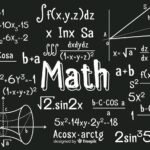The Comprehensive Guide to Calculating Days Between Dates
Calculating the number of days between two dates might seem straightforward, but it involves fascinating complexity when we consider the intricacies of calendars, leap years, and historical timekeeping systems. This comprehensive guide explores everything you need to know about day calculation, from basic formulas to advanced applications.
The History of Time Measurement
Humanity’s quest to measure time spans thousands of years, with early civilizations using celestial bodies to track days, months, and seasons. Ancient Egyptians developed a calendar with 365 days, while the Romans refined the system that eventually evolved into the Gregorian calendar we use today.
The development of accurate calendars was crucial for agricultural societies to determine planting and harvesting seasons. Religious observances also required precise timekeeping, leading to increasingly sophisticated methods of tracking days and years.
Did You Know?
The Gregorian calendar, introduced in 1582 by Pope Gregory XIII, was designed to correct the drift in the Julian calendar that had caused the equinoxes to shift over centuries. This correction involved skipping 10 days to realign with astronomical events.
Understanding Calendar Systems
Various calendar systems have been used throughout history, each with unique approaches to measuring time:
Solar Calendars
Based on the Earth’s revolution around the Sun, approximately 365.2422 days. The Gregorian calendar is a solar calendar with leap years added to account for the fractional day.
Lunar Calendars
Based on the Moon’s phases, with months approximately 29.53 days. Islamic calendars are lunar, containing about 354 days per year.
Lunisolar Calendars
Combine solar and lunar elements, adding intercalary months to keep synchronized with seasons. Hebrew and Chinese calendars follow this system.
Fixed Calendars
Proposed reforms with standardized month lengths, like the International Fixed Calendar with 13 months of 28 days each (totaling 364 days).
The Mathematics of Day Calculation
Calculating days between dates involves several mathematical considerations. The basic formula seems simple:
However, this calculation must account for:
- Leap years (years divisible by 4, but not by 100 unless also divisible by 400)
- Variable month lengths (28-31 days)
- Historical calendar changes (Julian to Gregorian transition)
- Daylight Saving Time adjustments in some applications
- Time zone differences when calculating across regions
Practical Applications of Day Calculation
Calculating days between dates has numerous practical applications across various fields:
Project Management
Determining project timelines, deadlines, and critical paths. Accurate day calculation helps in allocating resources and setting milestones.
Finance and Banking
Calculating interest accrual, loan durations, investment maturity dates, and payment schedules. Even a single day can significantly impact financial calculations.
Science and Research
Tracking experiments, observation periods, and data collection intervals. Scientific studies often require precise time measurements between events.
Legal Applications
Determining statutory deadlines, contract periods, and legal timeframes. Many laws specify time limits in days that must be calculated precisely.
Healthcare
Calculating treatment durations, medication schedules, and recovery periods. Medical protocols often depend on accurate day calculations.
Programming Date Calculations
In programming, date calculations require careful implementation. Most programming languages provide date libraries, but understanding the underlying mechanics is crucial for accurate results.
function countWeekdays(start, end) {
let count = 0;
const curDate = new Date(start);
while (curDate <= end) {
const dayOfWeek = curDate.getDay();
if (dayOfWeek !== 0 && dayOfWeek !== 6) count++;
curDate.setDate(curDate.getDate() + 1);
}
return count;
}
When implementing date calculations, programmers must consider:
- Time zone differences and daylight saving time
- Edge cases like leap seconds
- Historical calendar changes
- Localization and regional calendar differences
- Performance considerations for large date ranges
Leap Year Calculations
Leap years add complexity to day calculations. The rules for determining leap years are:
- A year divisible by 4 is a leap year
- Unless it is divisible by 100, then it’s not a leap year
- Unless it is also divisible by 400, then it is a leap year
This means that the year 2000 was a leap year (divisible by 400), but 1900 was not (divisible by 100 but not by 400). The year 2024 is a leap year (divisible by 4).
Cultural and Regional Considerations
Different cultures and regions may have unique calendar considerations that affect day calculations:
Fiscal Years
Many organizations use fiscal years that don’t align with calendar years. For example, the U.S. government’s fiscal year runs from October 1 to September 30.
Cultural New Years
Chinese New Year, Rosh Hashanah (Jewish New Year), and other cultural new years follow different calendars and occur on different dates each Gregorian year.
Business Days
Different countries have different weekend configurations (e.g., Friday-Saturday in some Muslim countries) and holiday schedules that affect business day calculations.
Daylight Saving Time
Not all regions observe DST, and those that do have different start and end dates, creating 23 or 25-hour days that can affect precise time calculations.
Advanced Date Calculation Techniques
For specialized applications, more advanced date calculation techniques may be required:
function countBusinessDays(start, end, holidays) {
let count = 0;
const curDate = new Date(start);
while (curDate <= end) {
const dayOfWeek = curDate.getDay();
const dateStr = curDate.toISOString().split(‘T’)[0];
if (dayOfWeek !== 0 && dayOfWeek !== 6 && !holidays.includes(dateStr)) {
count++;
}
curDate.setDate(curDate.getDate() + 1);
}
return count;
}
Other advanced techniques include:
- Calculating age in years, months, and days
- Determining the day of the week for any historical date (Zeller’s Congruence)
- Calculating Easter and other movable holidays
- Converting between different calendar systems
- Handling time zones and daylight saving time transitions
The Future of Time Measurement
As our understanding of time evolves, so do our methods of measuring it. Atomic clocks now keep time with incredible precision, losing less than a second over millions of years. Leap seconds are occasionally added to协调 atomic time with Earth’s rotation.
There are ongoing discussions about potentially replacing the current calendar system with a more rational alternative, such as the International Fixed Calendar or the World Calendar, which would simplify day calculations by standardizing month lengths and eliminating the need for varying day counts.
Fun Fact
The Unix timestamp, used by many computer systems, counts the number of seconds that have elapsed since January 1, 1970 (the Unix epoch). This system will face a problem on January 19, 2038, when the 32-bit integer used to store timestamps in many systems overflows, creating a year-2038 problem similar to the Y2K bug.
Formulas Section
Basic Date Difference Calculation
The fundamental formula for calculating the number of days between two dates is:
In JavaScript, this can be implemented as:
const end = new Date(endDate);
const differenceMs = end – start;
const days = Math.round(differenceMs / (1000 * 60 * 60 * 24));
Weekday Calculation
To calculate weekdays (Monday to Friday), we iterate through each day and count only weekdays:
let count = 0;
const curDate = new Date(start);
while (curDate <= end) {
const dayOfWeek = curDate.getDay();
if (dayOfWeek !== 0 && dayOfWeek !== 6) count++;
curDate.setDate(curDate.getDate() + 1);
}
return count;
}
Frequently Asked Questions
Our day calculator is extremely accurate. It accounts for all days between two dates, including leap years and daylight saving time changes. The calculations are based on JavaScript’s Date object which follows the Gregorian calendar system.
By default, our calculator counts the days between the two dates, excluding the start date but including the end date. For example, between Jan 1 and Jan 3, the result will be 2 days. However, you can adjust this based on your needs in the advanced options.
Yes, our calculator provides separate results for total days, weekdays (Monday to Friday), and weekend days (Saturday and Sunday). You can see the breakdown in the results section along with a visual chart representation.
The calculator automatically accounts for leap years. February has 29 days in leap years instead of 28, and our algorithm correctly handles this. The JavaScript Date object we use internally knows about all leap years according to the Gregorian calendar rules.
Absolutely! You can set the start date to today’s date (or any past date) and the end date to a future date. The calculator will determine the number of days between them. This is useful for counting down to events, deadlines, or special occasions.
Different calendar systems developed independently in various cultures based on astronomical observations, religious beliefs, and agricultural needs. While the Gregorian calendar is now internationally accepted for civil purposes, many cultures maintain their traditional calendars for religious and cultural events.
Time zones can affect day calculations when the start and end dates are in different time zones. For example, a calculation between dates in time zones on opposite sides of the International Date Line might yield a different result than expected. Our calculator uses the local time zone of your device by default.








